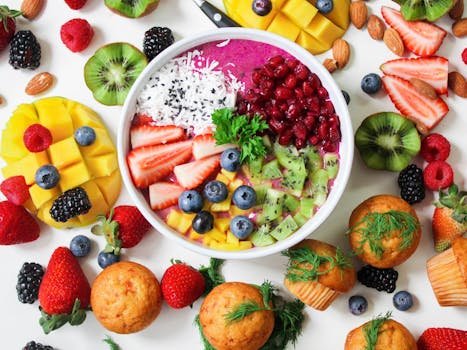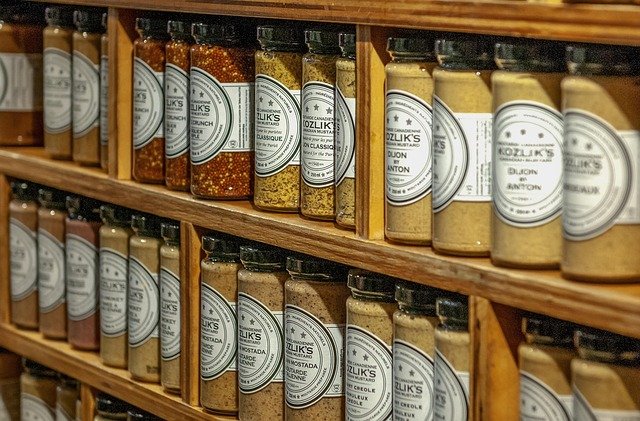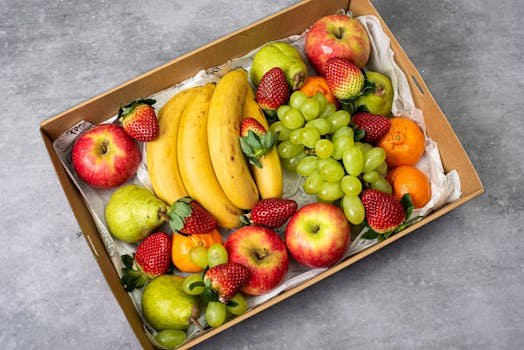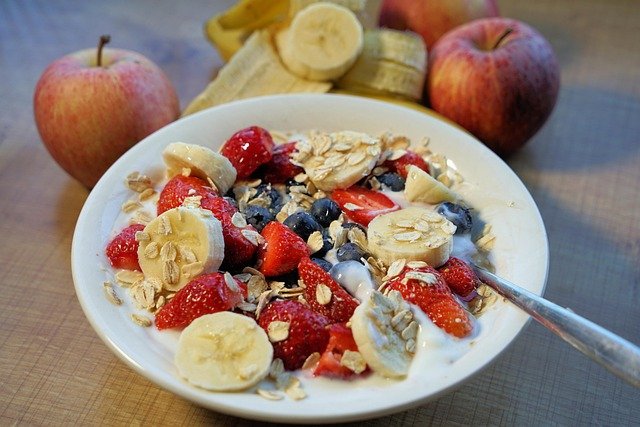Fuel Your Day: Why What You Eat Determines How You Feel
Energy levels aren’t just about how much sleep you got last night – they’re directly connected to what’s on your plate. When you fuel your body with the right combination of nutrients, you’re not just eating a meal; you’re programming your energy for the next several hours.
The difference between sustained energy and that dreaded afternoon crash comes down to understanding how your body processes different foods. Complex carbohydrates provide steady fuel, lean proteins support muscle recovery and satiety, and healthy fats help your body absorb essential vitamins while keeping you satisfied longer.
But here’s what most people get wrong: they think eating for energy means restricting calories or eliminating entire food groups. The reality is that your body needs adequate fuel to function optimally. When you under eat or skip meals, you’re essentially asking your car to run on fumes and wondering why you feel tired, cranky, and unfocused.
The goal isn’t perfection; it’s consistency. Small, intentional choices throughout the day, compound into sustained energy, better mood and improved performance in everything you do.

Fuel Your Body Right: The Power of Good Nutrition
Build a Balanced Plate
Nutrition is the foundation of a healthy lifestyle. What you eat affects your energy levels, mood, metabolism, and overall well-being. A balanced diet, rich in whole foods like fruits, vegetables, lean proteins, healthy fats and whole grains, helps your body perform at its best, whether you’re working out or simply getting through the day. Stay hydrated, avoid highly processed foods and aim for moderation, not perfection.
Good nutrition isn’t about following strict diets or cutting out entire food groups. It’s about making consistent, smarter choices that support your goals. Start with small changes, like adding more greens to your meals or choosing water over sugary drinks. Over time, these simple habits lead to lasting results, fueling your body for strength, energy, and long-term health.
Your health is your greatest investment. Whether it’s through balanced nutrition, regular movement, or simply making better daily choices, every small step counts. Stay consistent, stay motivated, and remember, progress is progress, no matter how slow. Keep showing up for yourself, and your body will reward you with strength, energy, and longevity.




Meal Prep 101: Save Time and Eat Healthy
In our fast-paced world, eating healthy can sometimes feel like just another chore on your to-do list. Between work, errands, and everything else life throws your way, it’s easy to fall into the trap of takeout and last-minute snacking. That’s where meal prepping comes in — your secret weapon to staying on track without losing your mind (or your time).
This guide breaks down Meal Prep 101 so you can start eating better, saving money, and actually enjoying the process.
✅ What Is Meal Prep?
Meal prep simply means preparing meals or ingredients in advance to make eating healthy easier during the week. Whether you prep full meals, batch-cook staples, or just chop veggies ahead of time, the goal is the same: convenience without compromise.
💪 Why You Should Meal Prep
- Save Time – Cook once, eat multiple times.
- Eat Healthier – Avoid impulsive decisions when healthy food is already ready.
- Save Money – Fewer takeout orders and less food waste.
- Reduce Stress – No more “what’s for dinner?” panic.
- Stay Consistent – Helps you stick to nutrition goals (especially if you’re tracking macros or calories).
🧊 Different Styles of Meal Prep
You don’t have to prep every single bite you eat. Choose the style that fits your lifestyle:
- Full Meals – Cook and portion out entire meals (ideal for grab-and-go eating).
- Batch Cooking – Make large batches of ingredients (grains, proteins, veggies) to mix and match.
- Ingredient Prep – Chop, marinate, or cook components for easy assembly during the week.
- Freezer Meals – Prepare meals you can freeze and reheat later.
🛒 How to Get Started: Step-by-Step
1. Plan Your Meals
Choose 2–3 meals you actually enjoy and won’t mind eating more than once. Think breakfast, lunch, dinner, and maybe snacks.
Example:
- Breakfast: Overnight oats or egg muffins
- Lunch: Grilled chicken bowls
- Dinner: Turkey chili or stir-fry
- Snack: Greek yogurt with fruit or veggie sticks with hummus
2. Make a Shopping List
Stick to your plan. A list saves time at the store and helps you avoid unnecessary buys.
3. Choose a Prep Day
Pick 1–2 days a week (like Sunday and Wednesday) to do your prepping. Block out 1–2 hours.
4. Prep in Batches
Cook your proteins, roast veggies, and boil grains at the same time to maximize efficiency.
5. Store It Smart
Use airtight containers (glass or BPA-free plastic) and label them with dates. Keep salads separate from dressings to prevent sogginess.
🥗 Sample 3-Day Meal Prep Menu
| Meal | Day 1 | Day 2 | Day 3 |
|---|---|---|---|
| Breakfast | Overnight oats with berries | Egg muffins + banana | Chia pudding + granola |
| Lunch | Chicken quinoa bowl | Turkey lettuce wraps | Veggie stir-fry with tofu |
| Dinner | Baked salmon + rice + broccoli | Pasta with lentil sauce | Grilled shrimp tacos |
| Snack | Apple + peanut butter | Greek yogurt + almonds | Carrot sticks + hummus |
🧠 Pro Tips for Success
- Start small. You don’t need to prep every meal—just a few can make a big difference.
- Double recipes. Make extra portions of dinner to use for lunch the next day.
- Season well. Prepped food can taste bland without good seasoning or sauces.
- Rotate meals weekly. Avoid food boredom by changing proteins, grains, or veggies.
- Invest in good containers. Quality containers make reheating and storing much easier.
🔁 Final Thoughts
Meal prep is more than just a trend — it’s a lifestyle shift that sets you up for success. Whether your goal is weight loss, muscle gain, better energy, or just getting dinner on the table without stress, meal prepping is a game-changer.
Start simple, stay consistent, and don’t be afraid to mess up. The more you do it, the easier (and tastier) it gets.
Understanding Food Labels: A Complete Guide to Making Healthier Choices





Walking down the grocery aisle can feel overwhelming when every package screams “natural,” “organic,” or “low-fat.” But behind these marketing buzzwords lies the real story: the nutrition facts panel and ingredients list. Learning to decode food labels is one of the most powerful skills you can develop for better health.
Start with the Nutrition Facts Panel
The nutrition facts panel is your roadmap to understanding what you’re actually eating. Here’s how to read it effectively:
Serving Size Matters Most Before looking at any numbers, check the serving size. A bag of chips might seem reasonable at 150 calories until you realize it contains 2.5 servings. All the nutrition information is based on one serving, so if you eat the whole package, multiply everything by the number of servings.
Focus on These Key Numbers
- Calories: Consider your daily needs (typically 1,800-2,400 for adults)
- Saturated fat: Aim for less than 10% of daily calories
- Sodium: Keep under 2,300mg per day (about 1 teaspoon of salt)
- Added sugars: Limit to 25-36 grams daily
- Fiber: Aim for at least 3 grams per serving in packaged foods
- Protein: Look for substantial amounts in main dishes
The 5% and 20% Rule
Use the Daily Value percentages as a quick guide:
- 5% or less: Low in that nutrient
- 20% or more: High in that nutrient
You want low percentages for saturated fat, sodium, and added sugars, but high percentages for fiber, vitamins, and minerals.
Decoding the Ingredients List
Ingredients are listed by weight, from most to least. This means the first few ingredients make up the bulk of the product.
Red Flag Ingredients to Limit
Hidden Sugars Sugar has over 60 different names on ingredient lists. Watch for:
- Anything ending in “-ose” (fructose, glucose, sucrose)
- Syrups (corn syrup, rice syrup, agave syrup)
- Concentrated fruit juices
- Cane sugar, coconut sugar, honey, maple syrup
If multiple forms of sugar appear in the first few ingredients, or if sugar appears multiple times throughout the list, the product is likely very high in added sugars.
Highly Processed Fats
- Trans fats: Often listed as “partially hydrogenated oils” – avoid completely
- Excessive saturated fats: Palm oil, coconut oil in large quantities
- Inflammatory oils: Look for better alternatives to soybean, corn, and cottonseed oils when possible
Artificial Additives While not necessarily harmful in small amounts, these indicate heavy processing:
- Artificial colors (Red 40, Yellow 5, Blue 1)
- Artificial flavors and sweeteners
- Preservatives like BHT, BHA, and sodium benzoate
- Excessive sodium in various forms (sodium phosphate, monosodium glutamate)
Refined Grains
- “Wheat flour” or “enriched flour” instead of “whole wheat flour”
- Products where refined grains appear before whole grains in the ingredient list
Green Light Ingredients
Whole Food Ingredients Look for ingredients you recognize and could find in your kitchen:
- Whole grains listed first (whole wheat, brown rice, quinoa)
- Recognizable fruits, vegetables, nuts, and seeds
- Simple proteins (chicken, salmon, beans)
- Natural fats (olive oil, avocado oil, nuts)
Beneficial Add-ins
- Probiotics (live cultures in yogurt and fermented foods)
- Omega-3 fatty acids
- Added fiber from whole food sources
- Vitamins and minerals from food sources rather than synthetic versions
Marketing Claims vs. Reality
Don’t be fooled by front-of-package claims. Here’s what they really mean:
“Natural”: Has no legal definition and doesn’t mean healthy or unprocessed “Organic”: Refers to farming methods, not nutritional value “Sugar-free”: May contain artificial sweeteners or sugar alcohols “Low-fat”: Often higher in sugar and sodium to compensate for flavor “Made with whole grains”: Could be mostly refined flour with a small amount of whole grains “No high fructose corn syrup”: May still be high in other forms of added sugar
Practical Shopping Tips
Compare Similar Products Don’t just grab the first option. Compare nutrition labels between brands of the same product. You’ll often find significant differences in sodium, sugar, and fiber content.
Shop the Perimeter First Focus on whole foods that don’t need labels: fresh fruits, vegetables, lean meats, and dairy. Use packaged foods to supplement, not replace, these basics.
Read Labels on “Health Foods” Too Granola bars, smoothies, and gluten-free products can be just as processed and high in sugar as conventional junk food.
When in Doubt, Choose Fewer Ingredients A general rule: the shorter the ingredient list, the less processed the food. Compare a basic oatmeal (ingredient: oats) with flavored instant oatmeal (15+ ingredients including multiple sugars and artificial flavors).
Special Considerations
For Weight Management Pay attention to calories per serving and fiber content. High-fiber foods help you feel full with fewer calories.
For Heart Health Focus on sodium, saturated fat, and trans fat content. Look for products with added omega-3s or plant sterols.
For Blood Sugar Control Check total carbohydrates, fiber, and added sugars. Higher fiber slows sugar absorption.
For Food Allergies Always read the entire ingredient list and allergen warnings, even on familiar products, as formulations can change.
Making It Practical
Start small. Pick one category of food you buy regularly (like bread, cereal, or snacks) and begin comparing labels. Once label reading becomes automatic for that category, expand to others.
Remember, the goal isn’t perfection but progress. Understanding food labels empowers you to make informed choices that align with your health goals. Sometimes the convenient option or the treat is worth it, but at least you’ll know exactly what you’re choosing and why.
The most important skill isn’t memorizing every additive or calculating every gram, but developing the habit of looking beyond the marketing claims to understand what you’re actually putting in your body. Your future self will thank you for taking those extra few seconds to flip the package and read the back.






The Gut-Body Connection: How Your Digestive Health Impacts Everything
Your gut does far more than just digest food. Scientists now call it your “second brain,” and for good reason. The trillions of bacteria living in your digestive system influence everything from your mood and energy levels to your immune system and sleep quality. Understanding this connection can be a game-changer for your overall health and wellness.
What Is Gut Health?
Gut health refers to the balance of microorganisms living in your digestive tract. This ecosystem, called the gut microbiome, contains over 100 trillion bacteria, viruses, fungi, and other microbes. When this community is diverse and balanced, you feel great. When it’s out of whack, you might experience digestive issues, but the effects go far beyond your stomach.
A healthy gut microbiome should be diverse, with many different types of beneficial bacteria working together. Think of it like a thriving ecosystem where different species support each other’s survival and function.
The Gut-Brain Connection
Perhaps the most fascinating aspect of gut health is its direct line to your brain. Your gut and brain communicate through the vagus nerve, hormones, and immune system signals. This explains why you might feel butterflies in your stomach when nervous or why certain foods can boost your mood.
How Your Gut Affects Your Mental Health About 90% of your body’s serotonin, the “feel-good” neurotransmitter, is produced in your gut. When your gut bacteria are balanced, they help produce adequate serotonin, supporting stable mood and emotional well-being. An imbalanced gut can contribute to anxiety, depression, and mood swings.
Research shows that people with diverse gut bacteria tend to have better stress resilience and more stable moods. The gut bacteria also produce other neurotransmitters like GABA, which helps you feel calm and relaxed.
Brain Fog and Cognitive Function Poor gut health can lead to inflammation that affects brain function, causing difficulty concentrating, memory problems, and that frustrating feeling of mental cloudiness. A healthy gut helps maintain the blood-brain barrier, protecting your brain from inflammatory compounds.
Gut Health and Immune Function
About 70% of your immune system lives in your gut. The beneficial bacteria in your digestive tract act as your first line of defense against harmful pathogens, toxins, and inflammatory compounds.
How a Healthy Gut Protects You
- Beneficial bacteria crowd out harmful microorganisms
- They strengthen the intestinal barrier, preventing toxins from entering your bloodstream
- They train your immune system to distinguish between helpful and harmful substances
- They produce compounds that reduce inflammation throughout your body
When your gut is imbalanced, you might find yourself getting sick more often, experiencing more allergies, or dealing with chronic inflammation that shows up as joint pain, skin issues, or fatigue.
Energy and Metabolism
Your gut bacteria play a crucial role in how your body processes and uses energy from food. Different bacterial strains help break down various nutrients, and some even produce vitamins like B12, folate, and vitamin K.
Weight Management Connection Certain gut bacteria are associated with healthy weight maintenance, while others are linked to weight gain and difficulty losing weight. People with diverse gut microbiomes tend to have better metabolic health and more stable blood sugar levels.
The gut bacteria also influence hunger and satiety hormones, affecting your appetite and food cravings. An imbalanced gut might leave you craving sugary or processed foods that feed harmful bacteria, creating a cycle that’s hard to break.
Sleep Quality and Gut Health
Your gut bacteria follow circadian rhythms just like you do. They’re most active during certain times of day and help regulate your sleep-wake cycle. Poor gut health can disrupt these rhythms, leading to sleep problems, while poor sleep can negatively impact your gut bacteria.
Many people notice that when they improve their gut health, they sleep more deeply and wake up feeling more refreshed. This happens because a balanced gut produces compounds that support healthy sleep patterns.
Signs Your Gut Might Need Attention
While digestive symptoms are obvious indicators, gut health issues can show up in surprising ways:
Digestive Symptoms
- Bloating, gas, or stomach pain after eating
- Irregular bowel movements or changes in stool consistency
- Heartburn or acid reflux
- Food sensitivities that seem to develop suddenly
Beyond the Gut
- Frequent colds or infections
- Skin problems like eczema, acne, or unexplained rashes
- Mood changes, anxiety, or depression
- Chronic fatigue or low energy
- Difficulty losing weight despite healthy eating
- Sugar and processed food cravings
- Sleep problems or waking up tired
- Joint pain or stiffness
- Brain fog or difficulty concentrating
Supporting Your Gut Health
The good news is that you can positively influence your gut health through lifestyle choices. Small, consistent changes can lead to significant improvements in how you feel overall.
Feed the Good Bacteria Focus on prebiotic foods that nourish beneficial bacteria:



- Fiber-rich vegetables like artichokes, asparagus, and onions
- Fruits like bananas, apples, and berries
- Whole grains like oats, quinoa, and brown rice
- Legumes like beans, lentils, and chickpeas
- Nuts and seeds
Add Probiotic Foods Include fermented foods that contain live beneficial bacteria:
- Yogurt with live cultures (check the label)
- Kefir, kombucha, and fermented vegetables like sauerkraut
- Miso, tempeh, and kimchi
- Start small with fermented foods, as they can cause temporary digestive upset if you’re not used to them
Lifestyle Factors That Matter
- Manage stress: Chronic stress disrupts gut bacteria and increases inflammation
- Get adequate sleep: Poor sleep negatively affects gut diversity
- Stay hydrated: Water helps maintain the mucosal lining of the gut
- Exercise regularly: Physical activity promotes beneficial bacteria growth
- Limit processed foods: These can feed harmful bacteria and promote inflammation
What to Avoid
- Unnecessary antibiotics (though take them when medically needed)
- Excessive alcohol consumption
- Artificial sweeteners, which can disrupt gut bacteria
- Chronic stress without management techniques
- Highly processed foods with artificial additives
When to Seek Professional Help
While lifestyle changes can significantly improve gut health, sometimes you need additional support. Consider consulting a healthcare provider if you experience persistent digestive symptoms, unexplained fatigue, frequent infections, or if gut health changes don’t improve with dietary modifications.
Some people benefit from targeted probiotic supplements, but it’s best to work with a healthcare provider to choose the right strains for your specific needs. Functional medicine practitioners, gastroenterologists, and registered dietitians can help you develop a personalized approach to gut health.
The Bottom Line
Your gut health is the foundation of your overall wellness. When you support your digestive system, you’re investing in better mood, stronger immunity, sustained energy, quality sleep, and long-term health. The connection between your gut and the rest of your body is so strong that improving gut health often leads to improvements in areas you might not expect.
Start with small, sustainable changes. Add more fiber-rich foods gradually, try one new fermented food, focus on stress management, and pay attention to how different foods make you feel. Your gut bacteria respond quickly to positive changes, so you might notice improvements in energy and mood within just a few weeks.
Remember, gut health isn’t about perfection or following a restrictive diet. It’s about creating an environment where beneficial bacteria can thrive, supporting your body’s natural ability to heal, protect, and energize itself from the inside out.
